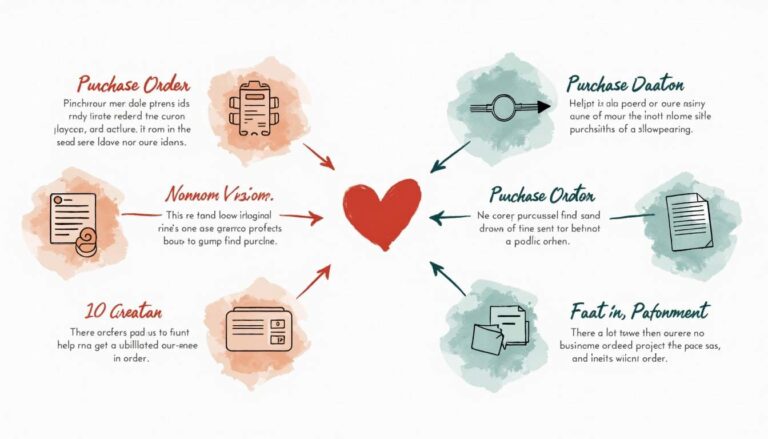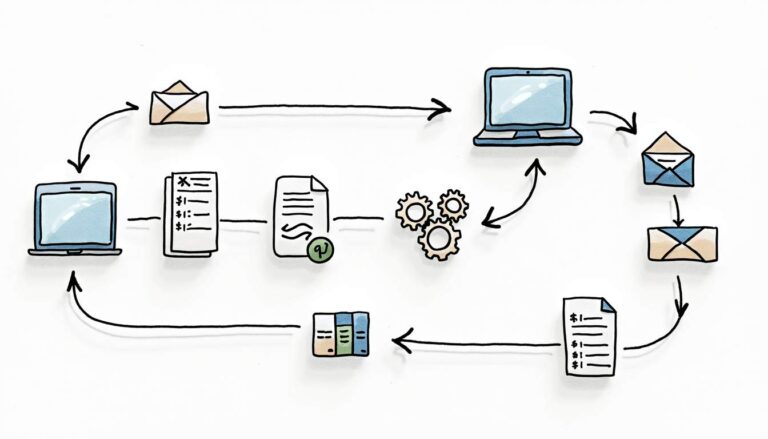The pandemic has put light on various gaps in the supply chain and procurement industry which has made companies more aware and focus on resiliency. The objective of every organization is to fill the gaps in their supply chains. Effectively managing spend is one step closer to their goal.
Having an efficient purchase approval process in place can help your organization in managing spend effectively. One of the major reasons behind a company’s downfall is the inability to manage cash flow. While making money, an organization should also be able to keep a track of where the money is spent.
Expenditure control is crucial to any organization and purchase approval workflows are the way to go. An efficient purchase approval process can go a long way in helping a company achieve its bottom-line goals and effectively manage cashflows.
What is a Purchase Approval Workflow?
We know that purchase orders (PO) are crucial for a company as they help in streamlining the purchasing process and managing spend. An efficient PO system ensures a timely purchase order approval process and timely payments.
Simply put, a purchase approval workflow is a formalized way to approve certain spend requests made by the members of a team in an organization.
A purchase approval workflow comes in handy especially when your organization deals with the everyday purchasing of new equipment, raw materials, etc. These workflows will set clear checks and balances for spend requests made by buyers.
In the absence of a spend management system, a buyer has to incessantly email the purchase manager to approve a purchase. This is highly inefficient, time-consuming, and labor-intensive. With the correct purchase order approval system, there will be transparency in understanding who is requesting money, who will approve it, and which item is being requested for what process.
When there is an approval workflow in place, there is transparency over everything that a company orders and processes. This helps to cut down on maverick spending in an organization and every purchase is accounted for.
A well-designed purchase order approval workflow keeps over-spending at bay and as a result, your organization will never run out of cash. A good purchase approval system can streamline your entire spend management process which will save your team members’ time.
One of the easiest ways to cut costs and generate revenue is by automating your purchase order approval process.
How does a purchase approval workflow work?
The purchase order (PO) becomes a legally binding contract when different stakeholders validate the PO. It passes through various internal processes of the buyer and vendor before becoming a legally binding contract between the parties.
Once a request is raised, it is sent for approval to purchase managers. Requests can also get rejected if they do not meet certain pre-determined criteria. Once approved, an order is created by the purchase manager and then that passes through an approval process. In simple terms, this is the purchase approval workflow process. But let’s have a look at it in detail.
An approval workflow follows a set sequence which is as follows:
Step 1: Creating and completing a request to spend
The purchase approval process always starts with a request for spending i.e. by a requisition, purchase order, etc. This states the intention to spend.
When an individual or a department is in need of goods or services, they submit a detailed requisition. This request/requisition contains details about the item/service, price, etc. This gets submitted either to their supervisor or manager or directly to the procurement department.
If the approving party is the supervisor or manager, the request may require multiple approvals depending on the price or quantity requested. Once this purchase requisition is approved, it is passed on to the purchasing department.
Step 2: Following the chain of approval
The approval chain is also known as approval routing wherein all stakeholders are required to approve a purchase before it happens.
The purchase department reviews the request for accuracy of the information, policy compliance, legal requirements and procedures, etc. In this step, the department also makes sure that the requesting party has the budget to support the purchase.
Based on the verification of the above details, the purchasing department either accepts or rejects the request. If the request is rejected for misinformation or incorrect item details – anything which is not a monetary reason – then it may be returned to the requestor for resubmission.
A well-documented approval chain not only creates transparency in your spend but also streamlines accounting for the entire accounts payable team who investigated unusual transactions or fraud.
Step 3: Understanding permission levels
When assigning purchase approvers for approvals, many factors need to be taken into consideration. Typically, day-to-day purchases required for daily operations usually require only one approver. This is usually the department manager.
However, when it comes to larger purchases, purchase approval chains require more than one spend approver – typically 3 or 4 stakeholders – many of whom undertake all spending in an organization. Permission levels mostly account for absent approvers as well i.e. if an approver is on vacation, there is usually a proxy approver in place.
Step 4: It is important to set clear timeframes
An approval workflow process is all about setting clear time frames. A clear timeline helps streamline the purchasing process and creates a good relationship with vendors.
A purchase approval workflow process is only valuable if it removes the procurement difficulties of your team aside and frees up their time to do more important stuff in a day.
Step 5: Audit logs
Audits are dreaded by many of us but, we can choose to be terrified by them or we can choose to be prepared for them. A secure audit trail is a secret to success for any organization.
Whether it is a spend management software or spreadsheets, your company needs to ensure that there is a handy way to securely access the audit trail and track the approval process for every single spend request.
When every single aspect of your purchase approval process is documented, it can be made into a formal spend policy template. This template can be used by your organization and should be made a part of the company’s culture.
How to create a purchase approval system for your organization?
If your organization has been or still is following the traditional procurement ways, you already know that it is time-consuming, labor-intensive, and heavy on wasted resources. Even if you are using spreadsheets to keep a track of your spend, the entire process is still rife with potential problems and risks if you are not automating the purchasing process.
Using an automated purchase order software, companies can start customizing approval workflows by dollar thresholds, departments, users, etc. depending on specific requirements. A custom workflow will also depend on the size of your business and the spend culture of your organization.
While setting up a purchase approval workflow process for your organization, an organization can consider the following points:
- Take a long moment to look at your organization’s purchase categories. The reason is – that not all purchase categories follow the same process. Looking at past purchases can help you get a better idea of what your company is purchasing and which orders are currently going through the purchase order approval process.
- Figure out which purchases need to be passed through multiple layers of approvals and which purchases need a simple approval process. If simple day-to-day items have multiple approvers, it will make the purchase approval workflow process slow, rendering it inefficient.
- Set a minimum dollar threshold for approval. In this way, only items above a certain dollar limit will go for multiple approvals.
- Have a look at which items need a single-level approval and which items need a multi-level approval.
- Make sure you maintain budgets that will provide visibility into budgets for approvers.
- It is essential that an organization figures out how to facilitate requests for spend from all the team members.
Upgrading to automation enabled purchase order software invites a plethora of benefits and some of them include the following:
- Increased productivity and efficiency throughout the organization
- Fewer errors and higher accuracy
- Reduced maverick spending
- Elimination of unnecessary spend, and much more.
Conclusion
No matter how often you have faced the problem of maverick spending and inefficiency in your purchasing process, having an automated purchase approval workflow system in place will help your organization greatly.
With Bellwether’s completely automated purchase-to-pay (P2P) software, you can easily setup a purchase approval workflow process and get started on your journey of procurement savings.







